These photos were taken at the Titan Missile Museum located
about 20 miles south of Tucson
at Suhuarita, Arizona. This ICBM silo complex is
reportedly the only one which was not destroyed when the cold war ended.
Both the missile and silo doors have been disabled in accordance with international
treaty, verifiable by satellite photography. The silo is approximately
164 feet deep. All equipment and systems were underground with the
exception of the refueling stations, concrete silo doors, radio antennas
and site security equipment. Sue and I visited the museum as part
of a tour of the PIMA AIR & SPACE MUSEUM PIMA
AIR and the AMARC (Aircraft Maintenance and Regeneration
Center) AMARC ,
a military aircraft storage facility. To view photos of some of the aircraft
at the PIMA AIR & SPACE Museum and the AMARC storage facility click
here.
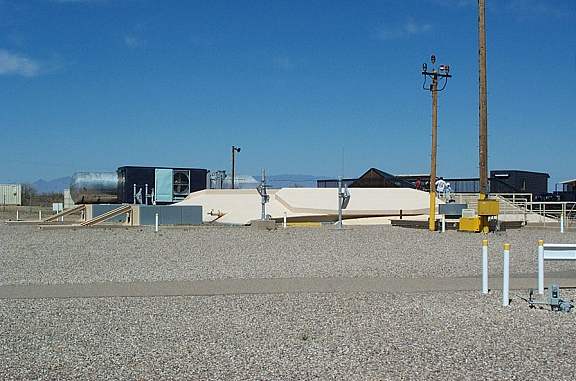
Silo doors in the partially open position. The two rows of gray
concrete blocks to the left of the doors
serve to satisfy treaty requirements by stopping the doors from being
opened completely. The silver tank
above the door assembly is an oxidizer tank truck used for refueling
the Titan missile. The missile inside the
silo has been disabled by cutting holes through the sides of
the stage one & two fuel tanks. This was
done with the missile lying on the surface of the ground, facing skyward
in order to be satellite verifiable.

Blast-proof airlock doors at the bottom of the entry stairwell, approximately
40 feet
underground, were used for personnel isolation and verification during
shift change. The concrete
visible on the floor between the yellow and black hazard tape illustrates
the thickness of the
blast-proof walls of 4-foot thick reinforced concrete with 2 1/2 inch
rebar on 9 inch centers.
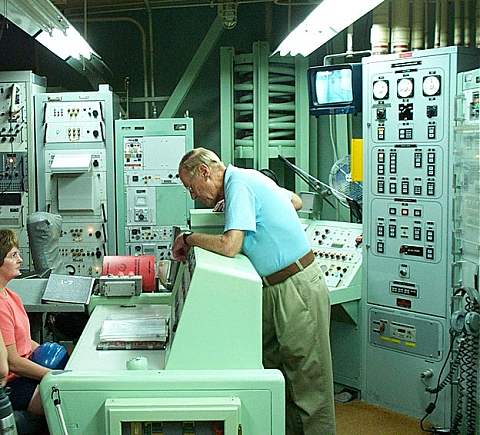
Missile launch control room. Note that the middle rack-mount panel
on the back
wall (upper left) is early 60's vintage equipment to receive fax transmissions
(receive
only). The large spring assembly, in the center of the photo
beyond our tour guide,
is one of several that support the control room and completely isolate
the facility
from any movement of the surrounding earth, such as would occur during
an attack.
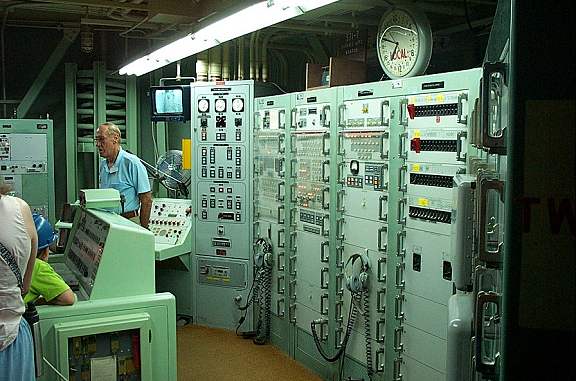
Missile launch control panel. Note the single TV security monitor
(in the upper
portion of this photo) for the one security camera located in the entry
stairwell.

This is the tunnel between the control room and the missile silo.
It is not isolated from
the surrounding earth; however, all of the piping and conduits running
between
the control room and the missile silo are carried by an overhead inverted
U shaped
assembly which is isolated by a series of spring canisters lining each
side of the tunnel.
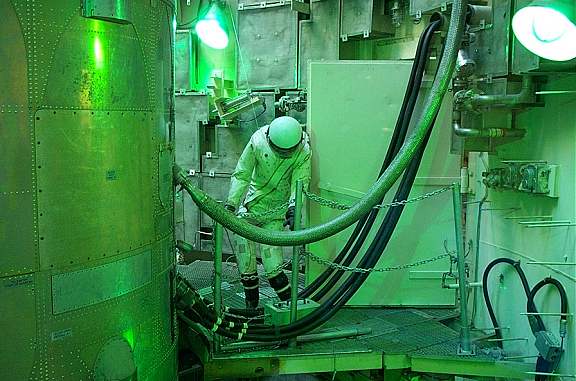
This shows a mock refueling of the second stage of the Titan missile.
The walls
of the silo are of eight-foot thick reinforced concrete.
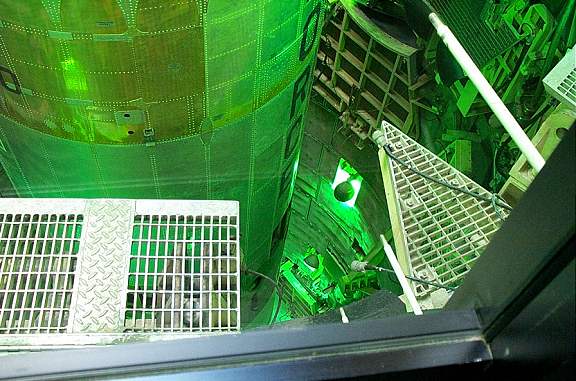
This view is looking farther down into the silo toward the first stage
of the missile.
Note the grating assembly on the far side of the silo.
A series of these assemblies
is at each level of the silo and could be swung into place to
service the missile.
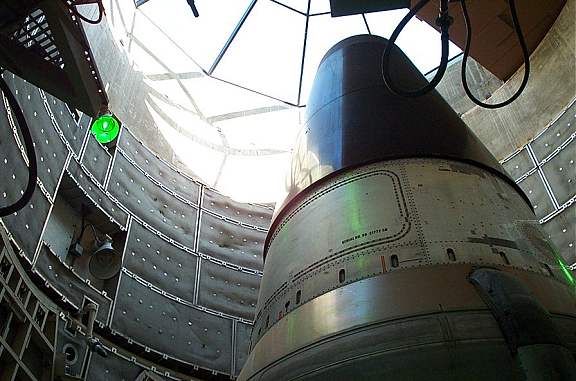
This is the top of the second stage of the missile, with the warhead
mounted on top. The
warhead was designed to be deployed at an altitude of approximately
500 miles. The
sound-absorbing panels mounted on the inside of the silo were required
to prevent the
sound waves generated during launch from destroying the missile. In
addition, a
large volume of water was to be injected into the silo during launch
to provide cooling.
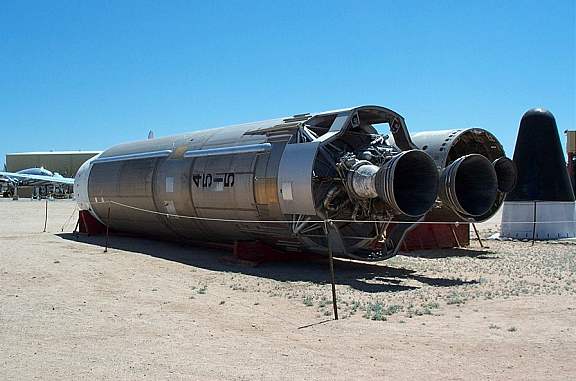
Titan missile and warhead on display at the Pima Air Museum.
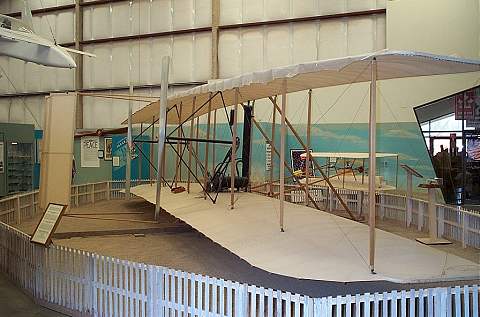
Just think, the Wright Brothers made their first successful flight in
1903,
and just 60 years later, the Titan Missile based ICBM system was put
in
place and then decommissioned by international treaty in the early
1980's
as the cold war was coming to an end.